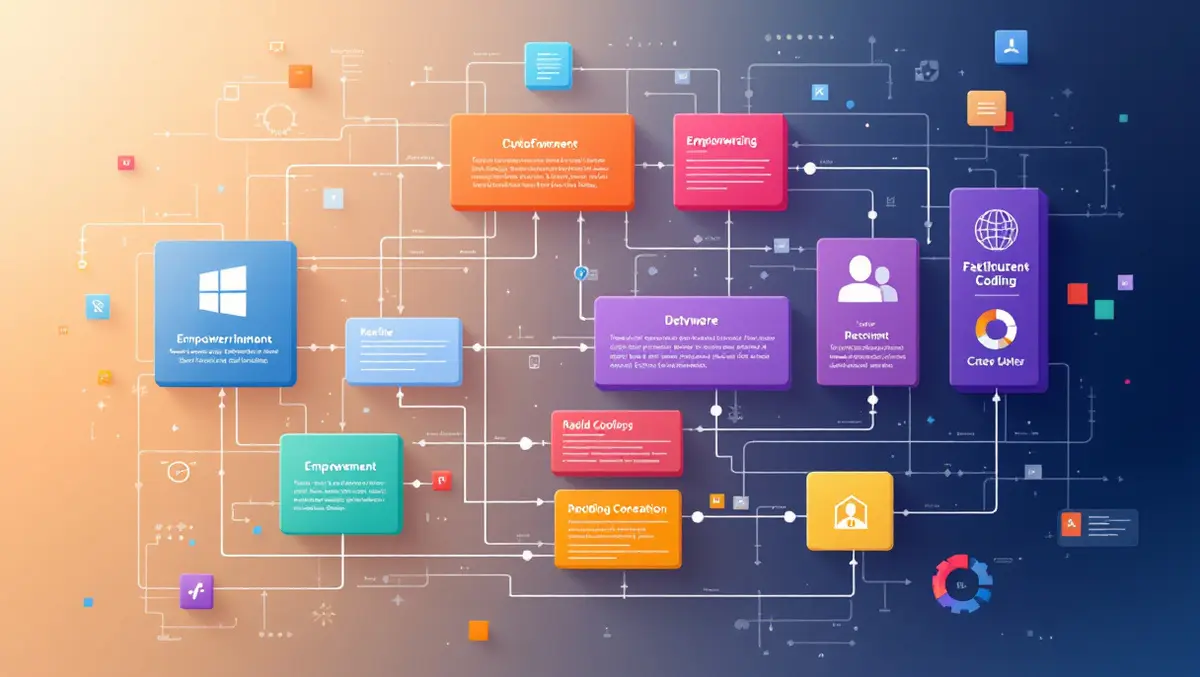
Low-code & no-code platforms drive business agility & savings
EASA's Founder and General Manager, Sebastian Dewhurst, has highlighted the increasing importance of low-code and no-code platforms in addressing the growing demand for software development across businesses.
According to a recent industry reference, 98% of technology leaders have reported development time savings when using low-code or no-code solutions. This trend indicates a significant shift in how organisations approach software development and internal collaboration between business teams and IT departments.
Sebastian Dewhurst explained that low-code and no-code platforms are reshaping the business technology landscape by making software development more accessible to individuals without extensive coding expertise. Dewhurst stated: "In today's constantly evolving digital landscape, the rapid demand for software development surpasses the supply of developers. With businesses racing to automate their workflows and fully digitise their workplace processes, traditional development cycles often don't have the capacity to keep up. Introducing no-code and low-code platforms, two types of software that empower and enable users to build tools and applications without extensive coding knowledge."
He described the distinction between these two software approaches: "So what are these revolutionary pieces of software? A no-code platform requires no programming skills to use at all. At its core, this software approach allows users to interact with visual interfaces, define workflows, and connect pre-built components without writing code. On the other hand, low-code platforms require a certain level of coding, but have a degree of flexibility in that they provide a balance between how easy it is to use and the flexibility to match the solution to the need."
Dewhurst went on to discuss the emergence of so-called "citizen developers"—business users with domain knowledge but without formal programming backgrounds. He said, "With this development, 'citizen developers' have risen out of the woodwork — people who have domain knowledge but lack formal programming training and can now participate in building software solutions. As a result, businesses can now rapidly test and deploy applications, which significantly reduces the duration of the development cycle and the time it takes to put the app out to market."
The broadening of the development pool through these platforms has implications for digital transformation and operational efficiency. Dewhurst commented on the wider impact: "These two types of software platforms can help to shorten the IT skills gap of skilled developers by growing a wider pool of individuals that can make a positive difference to digital transformation. Another positive effect this will have on businesses is that the individuals closest to the business problems will be more equipped to build solutions for each business's needs, allowing them to tackle specific pain points more effectively."
Dewhurst further highlighted significant cost advantages for organisations adopting low-code and no-code approaches, noting, "Another benefit of citizen developers is their reduced cost. By enabling users with no coding experience to build solutions, businesses can cut down on costs, which result from hiring expensive development teams. Low-code and no-code platforms tend to handle the admin, such as security updates and platform maintenance, which also cuts down on maintenance costs that usually come with traditional coding applications."
The platforms are also helping to improve collaboration between business units and IT professionals. Dewhurst addressed the collaborative benefits: "Low-code and no-code platforms have a plethora of benefits that go beyond cost reduction. These platforms can bridge the gap between businesses and IT teams. By business users taking a more active role in the development process, solutions that better align with their needs will be created, which will free up the IT team's time to focus on more complex matters that require their full attention."
Dewhurst added: "By automating coding and admin tasks, these two platforms free up the time of both citizen and professional developers to focus on more complex work that requires hands-on attention, which again leads to an increase in productivity within the company."
He also provided a view on future business agility and the need for wider acceptance of these platforms among business leaders, stating, "If we continue to support the integration of low-code and no-code platforms, the future of software development is a bright one considering the benefits that come with it, and more than that, represents a revolutionary culture shift towards a more agile, collaborative and democratised approach which enables business to respond quicker to issues and changes faster."
EASA has highlighted how the ongoing evolution and integration of low-code and no-code solutions are closely linked to a company's ability to adapt rapidly, reduce operational costs, and make technology-driven decisions more efficiently. The adoption of these platforms is expected to continue as businesses look for faster and more tailored ways to address internal challenges and the ongoing digital skills gap.


